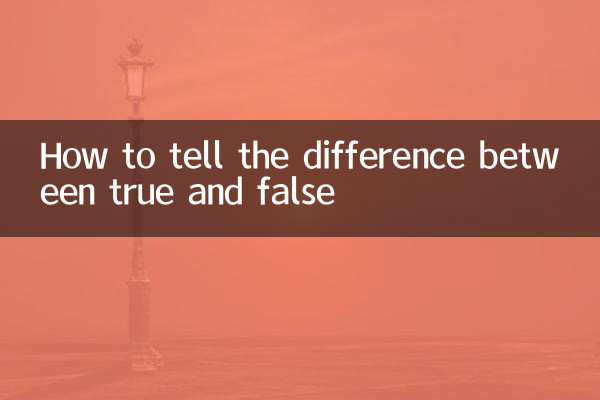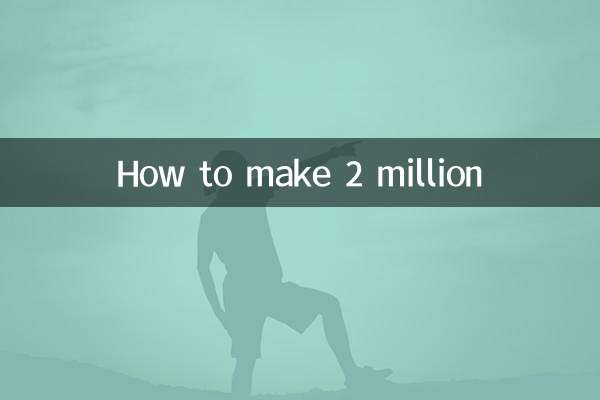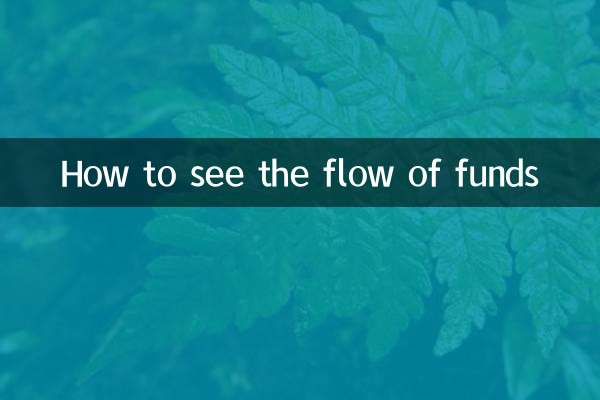Title: How to tell the difference between true and false
In the era of information explosion, a large number of hot topics emerge every day, but how to distinguish between true and false has become a big problem. This article will combine the hot topics on the Internet in the past 10 days, conduct a structured analysis on how to identify true and false information, and provide practical tips.
1. Inventory of hot topics on the Internet in the past 10 days

| Ranking | hot topics | heat index | Authenticity controversy |
|---|---|---|---|
| 1 | A celebrity’s divorce | 9.8 | Some of the revelations were confirmed to be rumors |
| 2 | New AI technology breakthrough | 9.5 | The authenticity of the research data needs to be verified |
| 3 | natural disaster somewhere | 9.2 | Disaster data are exaggerated |
| 4 | Internet celebrity food safety issues | 8.7 | The authenticity of the test report is questionable |
| 5 | international political events | 8.5 | There are conflicting opinions from all sides |
2. Five rules for distinguishing true and false information
1.traceability rule: Find the original source of information, official channels are more credible.
2.cross validation: Comparing statements from multiple independent sources, the higher the consistency, the greater the credibility.
3.time test: Let the information settle for a period of time, and the truth will often emerge over time.
4.logical judgment: Use common sense to judge the rationality of information, and be wary of overly exaggerated content.
5.Tool assistance: Use professional fact-checking websites and tools to verify the authenticity of information.
3. Key points for identifying different types of information
| Information type | Common methods of counterfeiting | Discrimination skills |
|---|---|---|
| news events | Quotes out of context and grafted onto others | View full video/original text |
| scientific discovery | Data tampering and exaggerated conclusions | Check the journal where the paper was published |
| Product information | False propaganda, PS renderings | View real reviews from buyers |
| social media | AI generated content, stolen materials | Reverse image search |
4. Recommendation of practical authentic and fake identification tools
1.fact-checking website: Such as Snopes, FactCheck.org and other professional organization websites.
2.Image verification tool: Google reverse image search, TinEye, etc.
3.Video analysis tools: InVID can analyze the metadata of videos.
4.AI content detection: Tools such as GPTZero detect AI-generated content.
5. Typical case analysis
Take the recent divorce rumors of a celebrity as an example: The initial news came from an anonymous account, but after verification, it was found that the account had posted false news many times before. Subsequently, the brokerage company made an official statement to refute the rumors, and mainstream media followed up with reports confirming that the rumors were untrue. This case shows the entire process from "anonymous revelations" to "official confirmation".
6. Suggestions for improving information literacy
1. Be skeptical and don’t believe explosive news easily
2. Pay attention to the analysis of authoritative media and professionals
3. Understand common information fraud techniques
4. Perform basic verification before sharing information
5. Continuously learn new verification techniques and tools
In this era where it is difficult to distinguish between authenticity and fakeness, it has become particularly important to master the ability to distinguish between authenticity and fakeness. I hope that the structured analysis and practical suggestions in this article can help everyone better identify authenticity and falsehood in the ocean of information and become wise consumers of information.

check the details

check the details